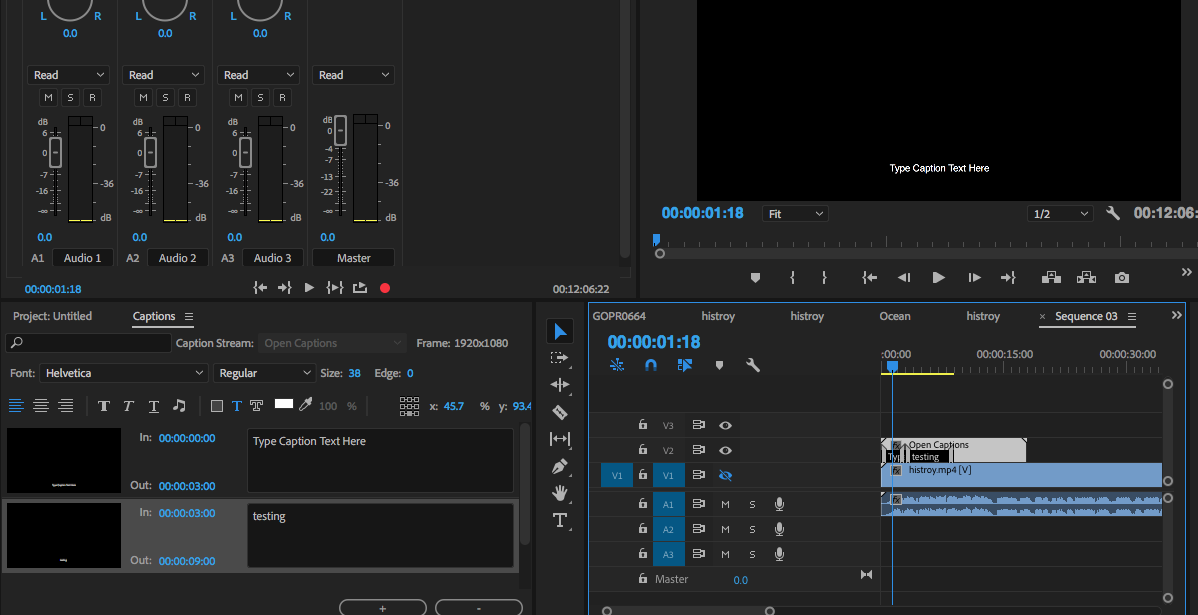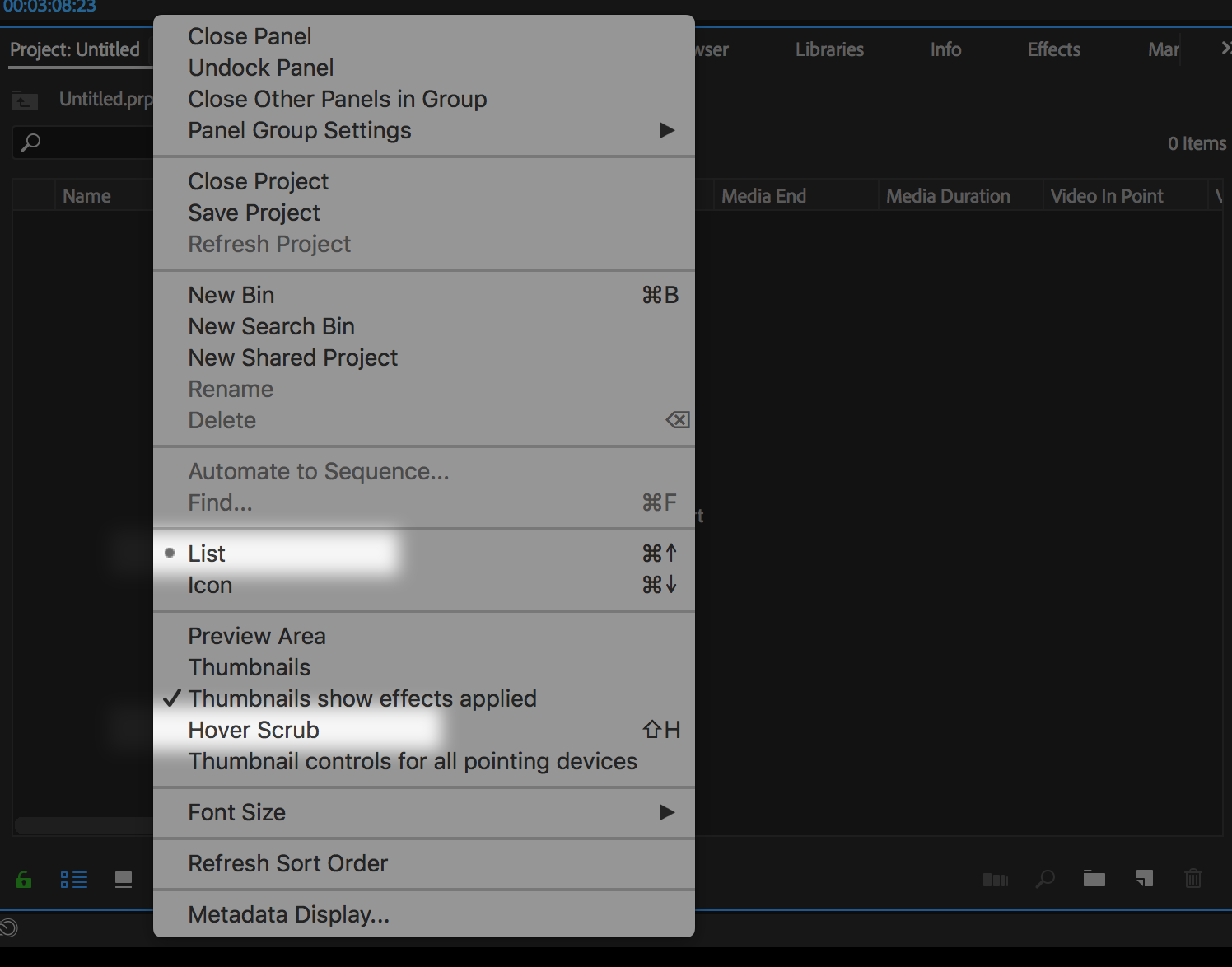- Premiere Pro Cc 2018 Crack
- Adobe Premiere Pro Cc 2018 Crack
- Adobe Premiere Pro Cc 2018 Quit Unexpectedly Mac Fix
Check out our other tutorials here at: to get Premiere Pro to stop crashing is a question that ma. Somewhere around the spring, 2018, Premiere update, Adobe added Ingest presets. These are special settings created in Adobe Media Encoder that can be applied when importing video files. By creating a special ingest preset, you can automate the process of creating proxies in the background and in the location of your choice. Wasted a day working on this CRASH I HAVE A MAC Adobe Premiere Pro CC 2019 quit unexpectedly. I have MOJAVE 10.14.2 and HAVE WASTED A DAY TRYING TO GET A PROJECT TO OPEN. PLEASE PLEASE HELP! WHY WON'T THIS OPEN? WORKED ONE DAY AND WASTED TODAY TRYING TO UNDERSTAND WHY IT WON'T WORK. For details, see Create a sequence in Adobe Premiere Pro CS4 Help, or Create a sequence in Adobe Premiere Pro Help. Solution 5: Choose the correct device control settings, or disable device control. Sometimes, you can't start capture if the device control settings are incorrect.
This page is a companion document to the system requirements for Premiere Pro and After Effects. It provides additional information on system components and considerations for optimal performance.
Want a downloadable version of this document? Click here to download a PDF.
The four key variables for a great video production system are memory, storage, graphics, and your processor.
Memory
Professional video workflows rely on system memory. A good video editing workstation should have at least 32GB of memory— and as much as 128GB.

Storage/hard drives
Fast storage is critical for video production. Use solid-state NVMe or SSD storage. Unless you have a fast RAID array, spinning disks generally do not offer sufficient speed for HD and 4K video production.
The best way to achieve excellent performance (and to keep different types of files organized) is to spread the load between multiple drives. An optimal setup has three drives:
- System drive for OS and applications
- Drive for the media cache
- Media drive (or shared storage)
Only have two drives? Use a fast external drive for your media and Media Cache.
The media cache is where Premiere Pro stores accelerator files, including peak files (.pek) and conformed audio (.cfa). Premiere Pro can make thousands of call to these files every second). For more information, see Set Media Cache preferences.
- NVMe Flash memory drives with Thunderbolt 3.0 connectivity are excellent.
- SSD drives with USB 3.1 connectivity are also good - but have a 4TB limit.
Graphics
The GPU is used for onscreen rendering and export, priority areas for video production. Premiere Pro is engineered to take advantage of the GPU. After Effects is also GPU-optimized.
- Graphics card with at least 4GB of memory (VRAM).
- (Optional) Multiple GPUs, including eGPUs, can be used to speed up rendering and export.
Out-of-date graphics drivers are one of the most common causes of performance issues with video applications. For optimal performance, make sure you have the latest drivers for your GPU, including integrated Intel GPUs. For more information, see GPU and GPU Driver Requirements for Premiere Pro.
Processor/GPU
For CPUs, clock speed matters more for After Effects. Multiple cores have more impact for Premiere Pro. The sweet spot for running both applications is a fast CPU with 8 cores.
- Core i7 or Core i9 Intel processors or AMD equivalents are strongly recommended.
- Fast clock speed at least 3.2 GHz, or higher.
- 8 cores are ideal for Premiere Pro. The application can use more cores, but without significant added benefit. Depending on the task, Premiere Pro runs at 93-98% efficiency with 8 cores.
H.264 and H.265 (HEVC) are widely used capture formats for DSLRs, mirrorless cameras, action cameras, and phones. H.264 is also the preferred format for uploading to YouTube and social media sites. These compressed formats are well suited for capture and distribution, but they are processor-intensive for post-production.
If you work with H.264 and H.265, consider Intel Core i7 and Core i9 processors, which offer Quick Sync hardware acceleration, supported in both Premiere Pro and After Effects.
AMD and Intel Xeon processors work well for other formats, such as cinema camera formats, (such as RED, Sony Venice, ARRI) and broadcast formats (such as XDCam HD).

Adding memory is the easiest and usually most impactful place to start if you want to upgrade your system to improve performance for both Premiere Pro and After Effects.
Upgrade Premiere Pro system in this order of priority:
- More RAM — up to 128GB if your motherboard supports it.
- A faster GPU (or additional GPUs) for faster rendering and export
- Faster (or more) NVMe or SSD drives
- Faster CPU
Upgrade your After Effects system in this order of priority:

Premiere Pro Cc 2018 Crack
- More RAM — 128GB is a good target for top-of-the-line systems.
- Faster (or more) SSD or NVMe drives
- Faster GPU (or additional GPUs) for faster rendering and export
- Faster CPU
Export times are impacted both by your graphics hardware and your workflow. A second GPU (same class GPU as the primary GPU) can provide substantial speed increases for export. Creating previews during your edit can also accelerate export times.
Assuming you have a good system, performance for multicam workflows is more dependent on your project setup than your hardware. Expert users create their own project templates to standardize their setup.
A calibrated reference monitor connected through external transmit hardware is highly recommended for accurate display of interlaced and color critical content. Sigmaplot 12 download. Proper monitoring of HDR content requires an HDR-capable external display.
This is a matter of personal preference. Because the timeline is a central element in the Premiere Pro UI, an ultra wide 37' display combined with a second reference monitor is an excellent option. Emuparadise gba.
Simultaneous monitoring of multi-channel audio requires a multi-channel sound card. On Windows the sound card should be ASIO-capable.


Storage/hard drives
Fast storage is critical for video production. Use solid-state NVMe or SSD storage. Unless you have a fast RAID array, spinning disks generally do not offer sufficient speed for HD and 4K video production.
The best way to achieve excellent performance (and to keep different types of files organized) is to spread the load between multiple drives. An optimal setup has three drives:
- System drive for OS and applications
- Drive for the media cache
- Media drive (or shared storage)
Only have two drives? Use a fast external drive for your media and Media Cache.
The media cache is where Premiere Pro stores accelerator files, including peak files (.pek) and conformed audio (.cfa). Premiere Pro can make thousands of call to these files every second). For more information, see Set Media Cache preferences.
- NVMe Flash memory drives with Thunderbolt 3.0 connectivity are excellent.
- SSD drives with USB 3.1 connectivity are also good - but have a 4TB limit.
Graphics
The GPU is used for onscreen rendering and export, priority areas for video production. Premiere Pro is engineered to take advantage of the GPU. After Effects is also GPU-optimized.
- Graphics card with at least 4GB of memory (VRAM).
- (Optional) Multiple GPUs, including eGPUs, can be used to speed up rendering and export.
Out-of-date graphics drivers are one of the most common causes of performance issues with video applications. For optimal performance, make sure you have the latest drivers for your GPU, including integrated Intel GPUs. For more information, see GPU and GPU Driver Requirements for Premiere Pro.
Processor/GPU
For CPUs, clock speed matters more for After Effects. Multiple cores have more impact for Premiere Pro. The sweet spot for running both applications is a fast CPU with 8 cores.
- Core i7 or Core i9 Intel processors or AMD equivalents are strongly recommended.
- Fast clock speed at least 3.2 GHz, or higher.
- 8 cores are ideal for Premiere Pro. The application can use more cores, but without significant added benefit. Depending on the task, Premiere Pro runs at 93-98% efficiency with 8 cores.
H.264 and H.265 (HEVC) are widely used capture formats for DSLRs, mirrorless cameras, action cameras, and phones. H.264 is also the preferred format for uploading to YouTube and social media sites. These compressed formats are well suited for capture and distribution, but they are processor-intensive for post-production.
If you work with H.264 and H.265, consider Intel Core i7 and Core i9 processors, which offer Quick Sync hardware acceleration, supported in both Premiere Pro and After Effects.
AMD and Intel Xeon processors work well for other formats, such as cinema camera formats, (such as RED, Sony Venice, ARRI) and broadcast formats (such as XDCam HD).
Adding memory is the easiest and usually most impactful place to start if you want to upgrade your system to improve performance for both Premiere Pro and After Effects.
Upgrade Premiere Pro system in this order of priority:
- More RAM — up to 128GB if your motherboard supports it.
- A faster GPU (or additional GPUs) for faster rendering and export
- Faster (or more) NVMe or SSD drives
- Faster CPU
Upgrade your After Effects system in this order of priority:
Premiere Pro Cc 2018 Crack
- More RAM — 128GB is a good target for top-of-the-line systems.
- Faster (or more) SSD or NVMe drives
- Faster GPU (or additional GPUs) for faster rendering and export
- Faster CPU
Export times are impacted both by your graphics hardware and your workflow. A second GPU (same class GPU as the primary GPU) can provide substantial speed increases for export. Creating previews during your edit can also accelerate export times.
Assuming you have a good system, performance for multicam workflows is more dependent on your project setup than your hardware. Expert users create their own project templates to standardize their setup.
A calibrated reference monitor connected through external transmit hardware is highly recommended for accurate display of interlaced and color critical content. Sigmaplot 12 download. Proper monitoring of HDR content requires an HDR-capable external display.
This is a matter of personal preference. Because the timeline is a central element in the Premiere Pro UI, an ultra wide 37' display combined with a second reference monitor is an excellent option. Emuparadise gba.
Simultaneous monitoring of multi-channel audio requires a multi-channel sound card. On Windows the sound card should be ASIO-capable.
Adobe Premiere Pro Cc 2018 Crack
Your workflow, and how you decide to work with file formats, can have a significant impact on overall performance. Our best practices guide for working with native formats has suggestions for designing your workflow to ensure optimal performance with your hardware.
Adobe Premiere Pro Cc 2018 Quit Unexpectedly Mac Fix
- Puget Systems recommendations for Premiere Pro
- Puget Systems recommendations for After Effects

